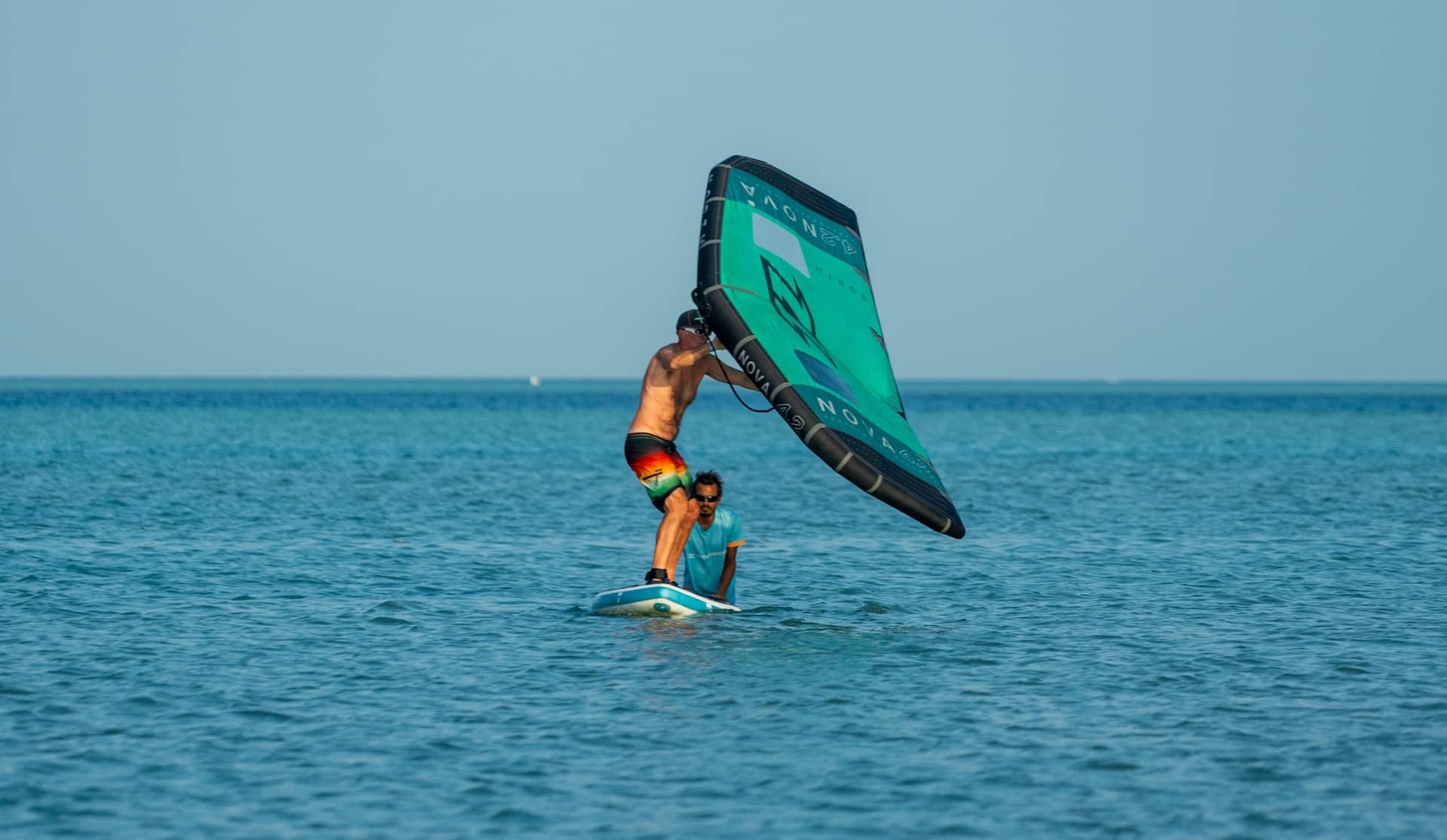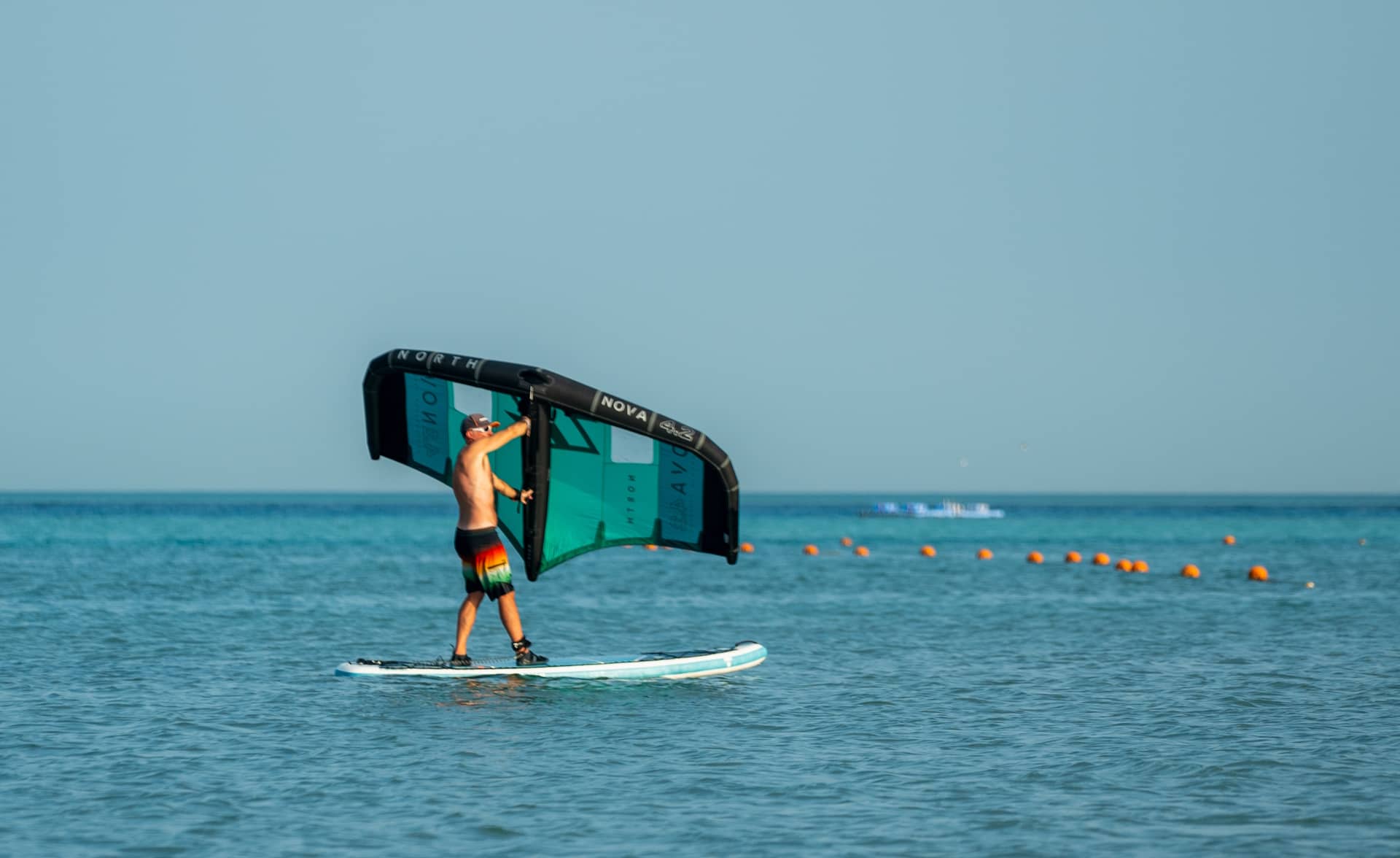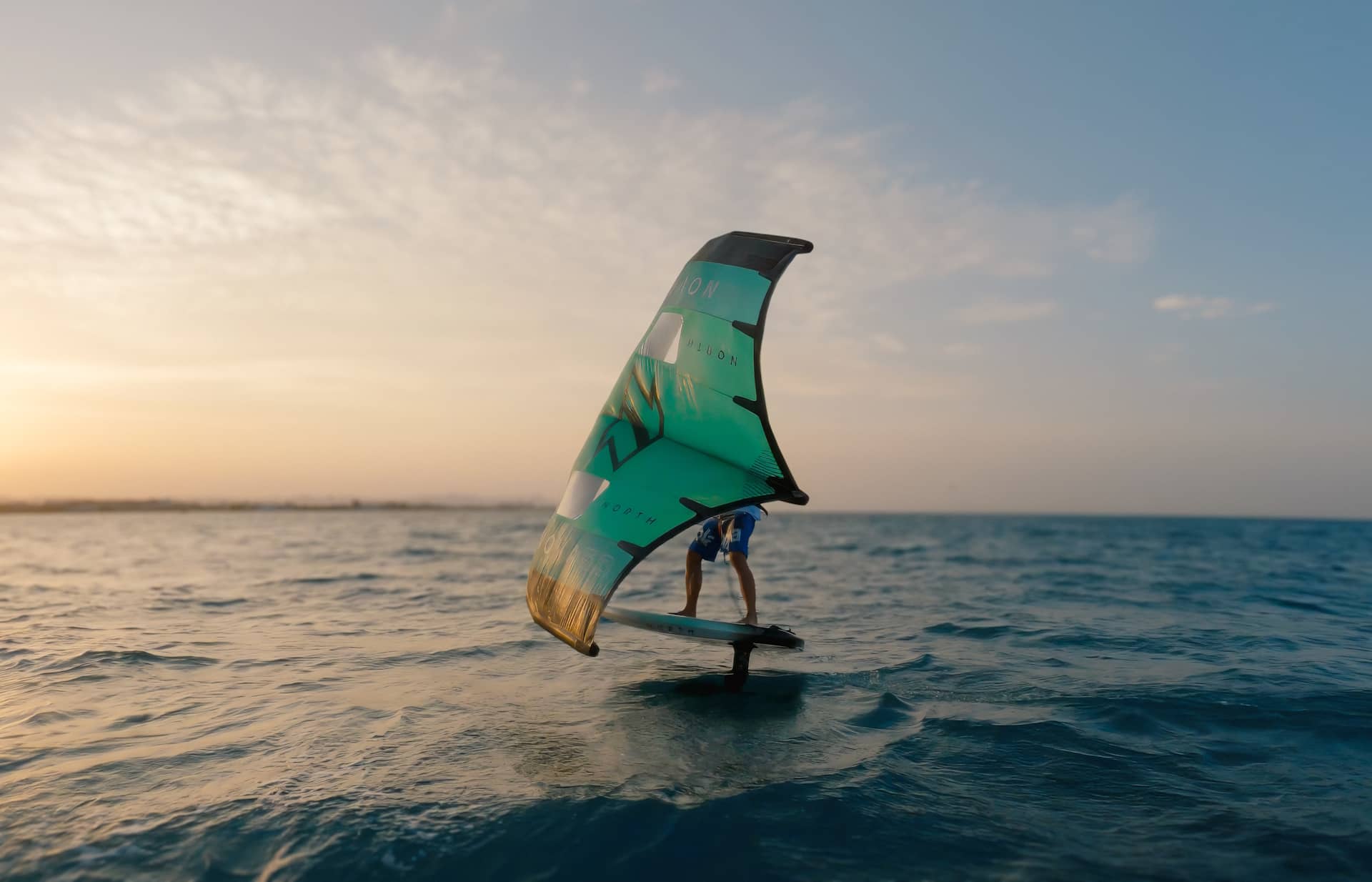Wing foiling might be the new kid on the watersports block, but it’s catching on—fast. A hybrid of windsurfing, foiling, and kiteboarding, it’s got all the adrenaline of action sports… without the intimidating kite setup or high-speed crashes. It’s smooth. It’s silent. It’s surprisingly simple to learn—especially in the right place, with the right people.
El Gouna’s calm, shallow lagoons and consistent wind make it one of the best spots in the world to learn to wing foil. But what actually happens in your first lesson? Let’s break it down.
Before you even get near the water, your instructor will walk you through the gear. Wing foiling uses far less equipment than kitesurfing, but each component still has an essential job. At Riah, we’ll show you:
We believe knowing what you’re riding makes you ride it better. And safer.
[IMAGE & ALT TEXT: A beginner wing foil student grins on the beach, holding the wing above their head while an instructor adjusts the leash attachment.]
Before water, comes wind. Specifically, how to use it.
You’ll learn to hold and control the wing on land, practicing positioning, grip, and power control. In steady El Gouna winds, this phase is actually fun—you’ll feel the pull, learn to steer, and discover what the wing can (and can’t) do.
A big part of this step? Learning to depower the wing in gusts, and steer it through power zones to move, turn, or stop.
Think of it like learning to drive—but on the beach, and way more fun.
Before strapping in the foil, it’s time to get your sea legs.
We’ll usually start with a larger, stable board without the foil. Why? Because balance is everything, and learning to stand and steer without the added lift of the foil builds confidence fast.
You’ll practice kneeling, standing, and controlling the board while managing the wing. And if you fall? You’ll just be standing right back up in our warm, shallow lagoon.

Once you’ve mastered the basics of balance and wing control, it’s time to hit the water.
You’ll start kneeling on the board, powering the wing to move forward. Once you’ve got forward motion, it’s all about standing up, balancing the board, and steering with your wing. Don’t expect to fly just yet—but you will glide, and that’s the beginning of the magic.
You’ll practice:
And if you’re ready, we’ll add the foil.
Once your wing and board control feel solid, you’ll be introduced to the foil.
The foil lifts the board out of the water once you’ve got enough speed. It’s what makes wing foiling feel like flying. But it’s also a new skill—balancing above the water requires control, precision, and calm nerves.
With calm, flat water and clear instruction, most students start foiling within their first few sessions. Some even get their first few seconds of flight in lesson one.

Wind strength. Direction. Gusts. Currents. These environmental factors make or break a session.
Your instructor will teach you how to read the wind and water before every session—so you’re not just a rider, but a thoughtful and safe one.
El Gouna has some of the most predictable, beginner-friendly conditions in the world. Warm water. Steady wind. Gentle lagoons. It’s a place built for progress.
You should expect to:
At Riah Kite Academy, we use accredited IWO (International Wingfoil Organization) methods, and our instructors are trained to teach at your pace—whether you want a chill cruise or a fast-track flight.
Ready to fly?
Check out our [wing foil lesson packages] in El Gouna or grab browse our free blog on Why El Gouna is the Perfect Place to Learn Wing Foiling, to see why you have to take the next step!
